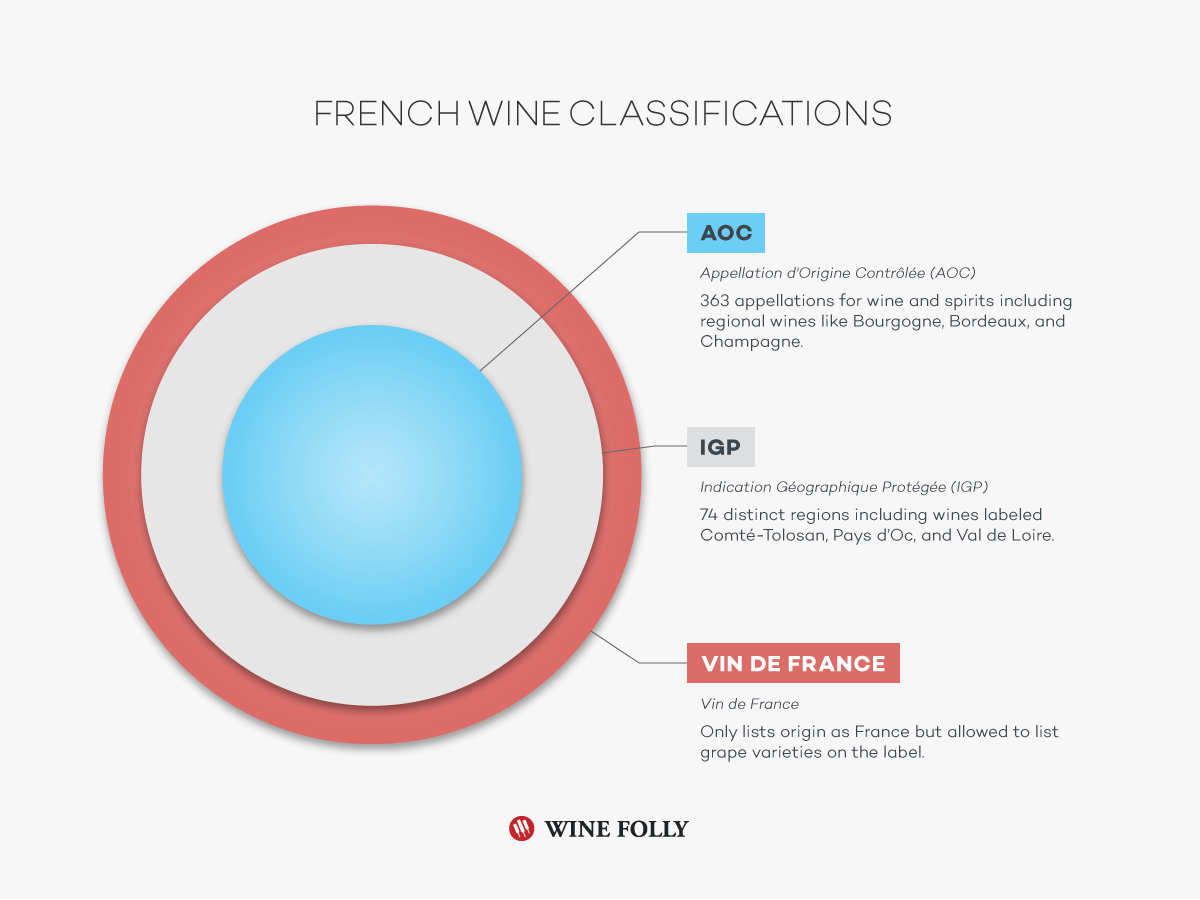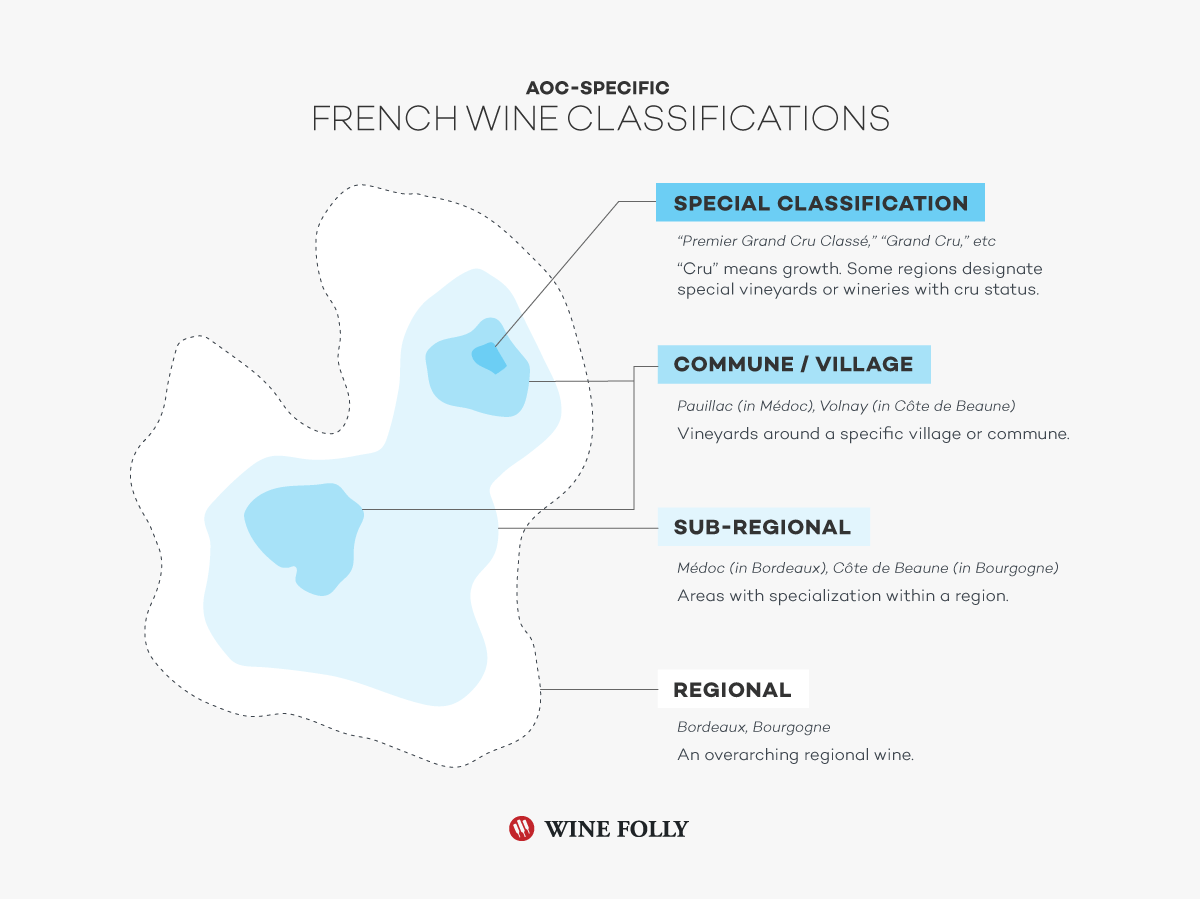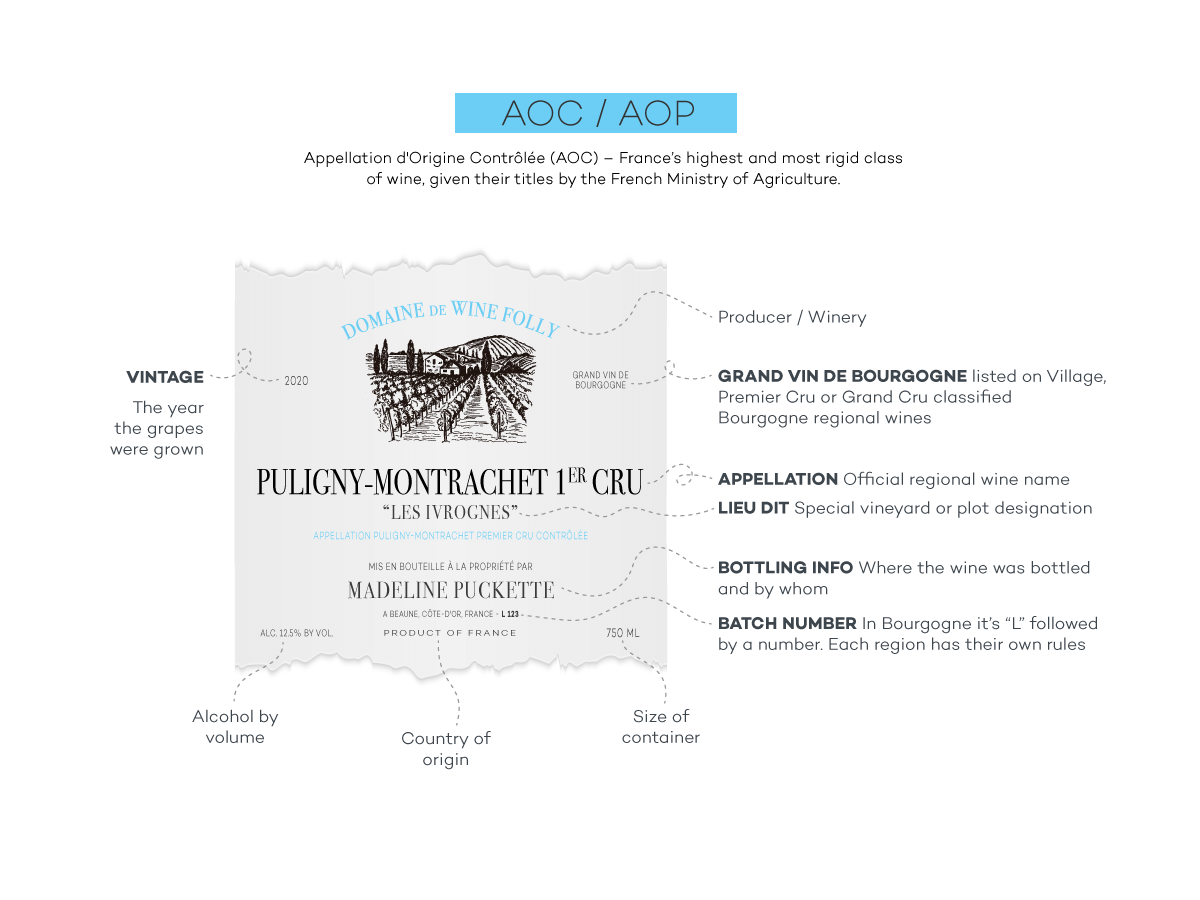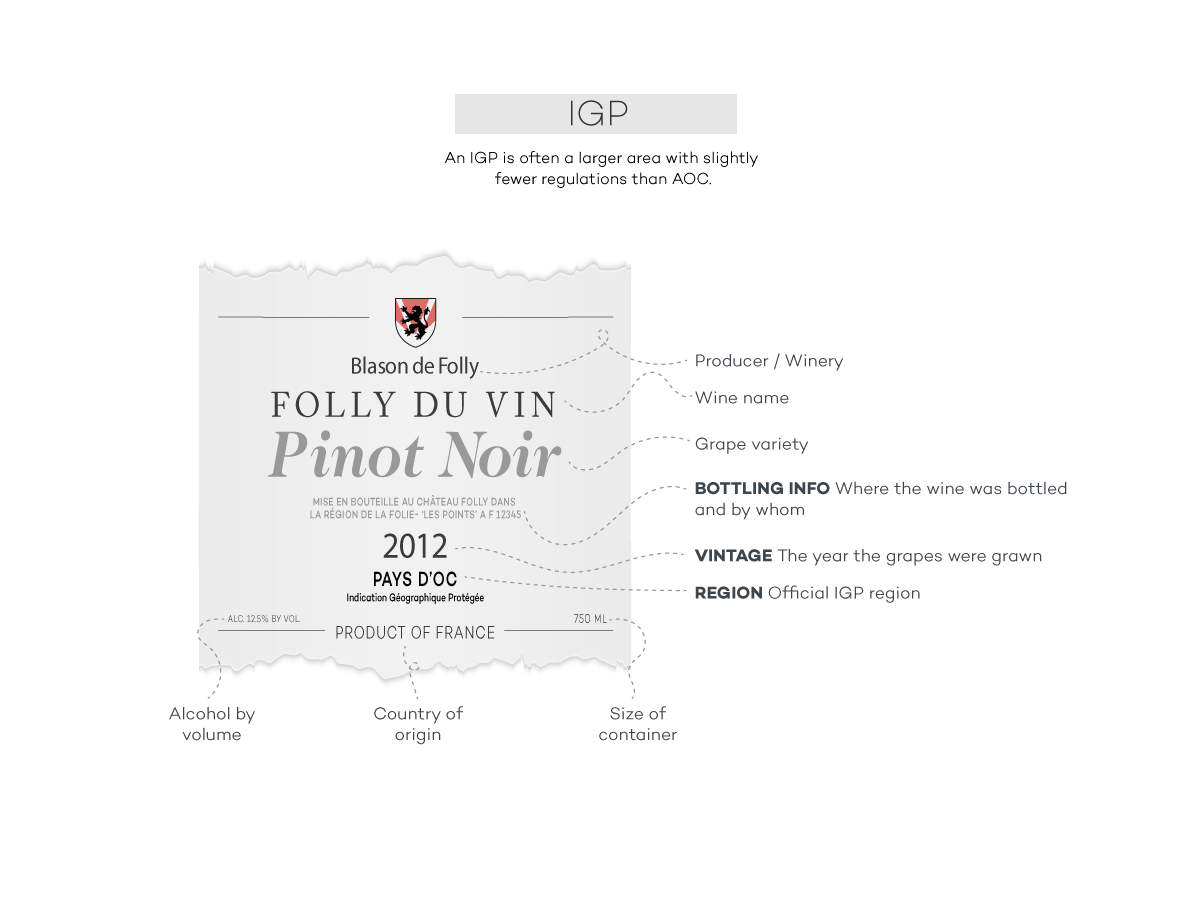When it comes to AOC wine and French classifications, it can feel really complicated really fast. But if you know some basics, you’ll find that understanding comes pretty easily. Plus, it’ll help you drink better wine!
New Guide: Strengthen your knowledge of France’s Bordeaux AOCs with Wine Folly’s new Bordeaux Region Guide.

What is AOC Wine?
Have you ever been buying wine and noticed the words AOC somewhere on the label?
AOC is short for Appellation d’Origine Contrôlée, and refers to standards set for wines made in France. There are 363 AOCs for wine and spirits in France which control everything from how the grapes are grown to what wine varieties are in the bottle.
The French wine classification correlates with the European Union’s PDO (Protected Designation of Origin) which protects all kinds of regional food specialties such as Parmigiano-Reggiano cheese in Italy.
In France, there is a governing body called the INAO: the Institut National de l’Origine et de la Qualité. This branch of the French Ministry of Agriculture ensures quality for wine, cheese, and other food products.

Designations of AOC Wine
Within the AOP itself, you’ll find several designations that reflect location and quality.
- Regional: This refers to the broadest sense of an AOC. Examples: Bordeaux, Burgundy.
- Sub-Regional: Within those regions are smaller subregions known for more specific wine or terroir. Examples: Bordeaux’s Médoc sub-region, Burgundy’s Chablis sub-region.
- Commune/Village: Narrowing further within a subregion, these areas are sometimes only a few miles in scope. Examples: Pauillac in Médoc, Côtes d’Auxerre in Chablis.
- Special Classification: An AOC might be further specified for quality at this point, indicating a Cru, which refers to a specific vineyard or group of vineyards typically recognized for quality.
Where Did the AOC Come From?
In an effort to control the reputation of wine and other cultural foods, France established the INAO in 1935. Support for the creation of the AOC itself was in large part due to winemaker Baron Pierre Le Roy, leading to the first designated AOC: Châteauneuf-du-Pape.
By 1937, the establishment of the AOC for classic winemaking regions such as Bordeaux, Burgundy, and Champagne took place, setting about standards and rules that are still in effect today.
For example, AOC laws ensure that if you buy a bottle of French wine labelled “Champagne,” you’re getting a sparkling wine made in the traditional method from the region of Champagne with Chardonnay, Meunier, and/or Pinot Noir. (And that’s just scratching the surface of standards.)
What’s an IGP?
There is another tier of French wine that’s well worth investigating called IGP wines. This classification name stands for Indication Géographique Protégée or “Vin de Pays” as in, a “country wine.”
IGP lists 74 geographical areas and 150 unique designations. Some examples include Pays d’Oc, Comté-Tolosan, and Val de Loire.
IGP regional wines allow for more grape varieties and a less strict set of standards in the creation of said wine. That means there are fewer rules, which leads to a much greater variation in quality than one would generally see in an AOC wine. In some rare instances, producers choose this classification because their wines fall outside of the ruleset for AOC.
What’s the Difference Between AOC and IGP?
If an AOC refers to specific locations and specific rules, an IGP broadens those rules. Usually, an IGP comes from a larger area with fewer regulations on grape growing and varieties allowed. For this reason, it’s pretty common for a French IGP wine to list what grape varieties are used on the label.
For example, with a bottle of wine from the Bordeaux sub-region of Sauternes, you generally know what to expect: a sweet white wine concentrated by botrytis, made from up to three specific grapes. However, a wine from the IGP of Pays d’Oc might refer to a white, red, or rosé wine of various styles and grape varieties.
This doesn’t mean that you’ll automatically prefer a wine from an AOC over one from an IGP. Just that the standards set in the AOC are more specific.
What is Vin de France?
Technically speaking, Vin de France has the lowest-quality position of all French wine. Vin de France refers to basic table wines with no specific region assigned to it. With these designations, the only guarantee you’re getting is that the wine itself is from France. Grapes can come from any number of regions, and the winemaking standards are the least strict of all.
In fact, if wineries classify their wines under “Vin de France” they’re not allowed to list the origins of the grapes. For the most part, these are the lowest quality wines from France.
In rare cases, French wineries choose to “buck the system” and create a totally unique wine that doesn’t follow the rules. These wines get declassified to Vin de France. This exact scenario happened to the 2015 vintage of Graves–Bordeaux producer, Liber Pater, who used ancient regional grapes not officially allowed in Bordeaux wines. Still, the winery sold them for $5500 a bottle!
France’s Standards Set
Classification laws like AOC are part of what establish France’s reputation as a producer of reliably great wine.
And while there are no rules that say an AOC is always going to be your personal favorite, these wine regulations have been very influential in how other region’s wines operate throughout the world.


